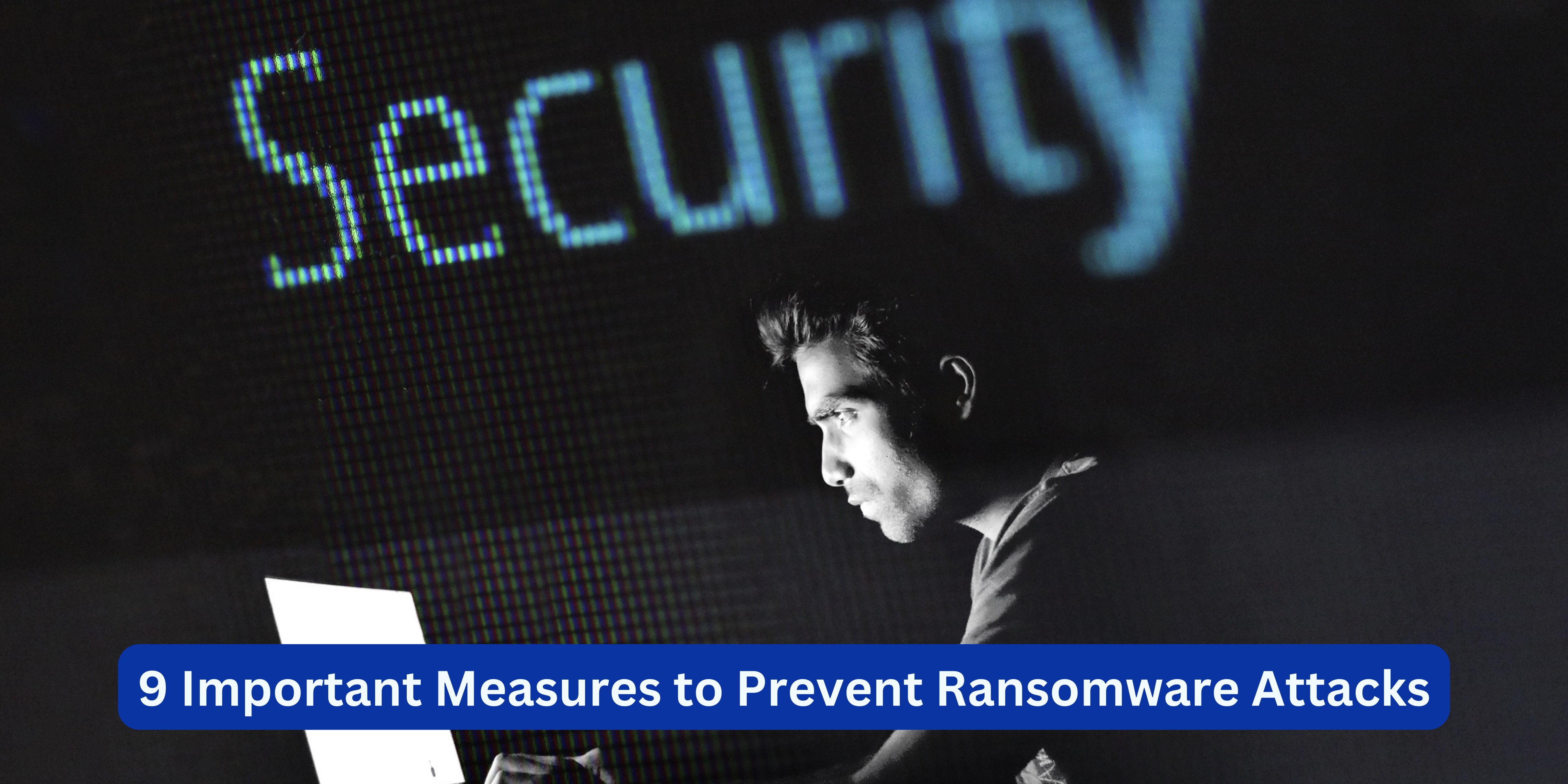9 Important Measures to Prevent Ransomware Attacks
Cybersecurity
Ransomware Protection:
There are several things you can do to prevent ransomware, but one of the most important is investing in ransomware protection.
Investing in ransomware protection will help you restore access to your encrypted files in case they're decrypted by criminals, or even if they've been deleted by accident, you'll be able to get back into your life as quickly as possible.
Steps involved in ransomware protection:
1. Train staff to not click on malicious links or spam messages
Clicking on an unsafe link or downloading dubious email attachments might lead to an automatic download of ransomware infection onto your computer. Do not disclose personal information in an email or text from an unknown source. Then this info could be used to craft a phishing message explicitly for you.
2. Avoid using unknown or strange storage devices
Don’t connect any unknown storage devices or USB sticks to your computer. Doing this could lead to an infection if the device had already been infected with malware by cybercriminals. They could have infected the device and placed it in a public place to allure someone into using it.
3. Make sure that your browsers and operating systems are up to date
Keeping your programs, apps, web browsers, and operating systems up to date will help you protect your devices from malware. The latest security patches will make it harder for cybercriminals to exploit vulnerabilities in your system. Enabling automatic updation is highly advocated.
4. When using public Wi-Fi, use a VPN
Meticulous use of public Wi-Fi networks is a thoughtful way to protect against ransomware. When you are using public Wi-Fi, your device is more susceptible to ransomware attacks. Using a VPN will mask your IP address and conceal your data, making it difficult for criminals to attack you.
5. Backup Your Critical Data
Maintaining an active inventory of all your devices, apps, and systems will help you identify vulnerable targets. Identifying and backing up critical data is one of the most efficient ways to recover quickly from a ransomware infection. It is important to protect and safeguard your data backups offline or off-network.
6. Incident Response Plan:
A robust and fail-proof incident response plan will secure your business from ransomware. An Incident Response Plan is a well-defined plan designed to recover systems and data backup, remove infection, and remediate from an attack. It also helps to minimise the recovery time and mitigate the risk involved. Conducting recovery drills will ensure that your backup is readily available. It also ensures that all steps included in the plan are in due order and all teams and individuals have a thorough understanding of their roles and responsibilities.
7. RDP and SMB should be protected:
Remote Desktop Control and Server Message Block are two important tools to access files and applications available on a company’s network while working remotely. But recently, they have become a gateway for attackers to gain access to your organization’s network. To prevent this, you can close your RDP or SMB ports outside your network. Considering MFA (multi-factor authentication) for accessing your RDP and SMB ports will add an extra layer of protection. Detecting and limiting failed login attempts is also a way to protect your ports.
8. Endpoint protection
Endpoint protection is the practice of securing the data and functions associated with the devices connected to your network from ransomware threats. Endpoints could be devices such as mobile phones, tablets, smart watches, ATM machines, and medical devices. Endpoint protection gives a consolidated platform for admins. It helps to improve visibility and enables us to detect and isolate threats quickly.
9. Employing Intrusion Detection Systems or SIEM
An Intrusion Detection System aids in monitoring the traffic of your network to detect any harmful activity or policy violations. The data is then put down to a Security Information and Event Management (SIEM) and it analyses the patterns of your traffic and data and creates an alert to your IT security team when it detects a threat.
